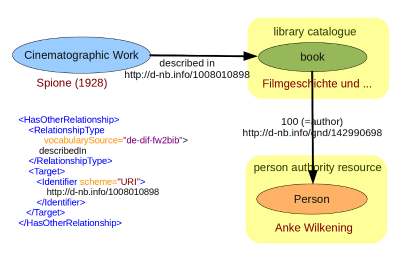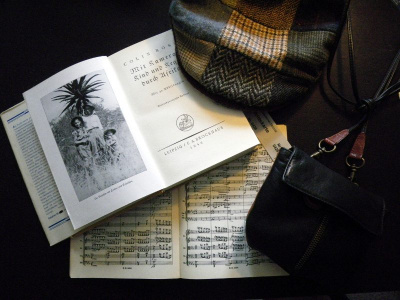Difference between revisions of "In-house usage scenarios"
From filmstandards.org
| Line 10: | Line 10: | ||
| valign="top" width="405px" | | | valign="top" width="405px" | | ||
| − | Why is it that most cinematheques collect various things in addition to moving images? It is because we tend to think of '''cinema''' as something that '''is embedded in a cultural context'''. How can we make our catalogues and other knowledge tools reflect this context? | + | Why is it that most cinematheques collect various things in addition to moving images? |
| + | |||
| + | It is because we tend to think of '''cinema''' as something that '''is embedded in a cultural context'''. How can we make our catalogues and other knowledge tools reflect this context? | ||
|} | |} | ||
| + | |||
| + | |||
| + | {| style="float: right; border: 1px solid #BBB; margin: .46em 0 0 .2em;" | ||
| + | |- | ||
| + | | valign="top" width="405px" |[[File:Linkfriendly1.png|400px]]<br /> | ||
| + | <span style="font-size:8pt"> | ||
| + | </span> | ||
| + | |||
| + | | valign="top" width="405px" | | ||
| + | In this example, we use a '''link-friendly''' library catalogue. Any catalogue record from the Deutsche Nationalbibliothek (DNB) can be retrieved via a URI that is agreed to remain constant throughout the lifetime of the institution. In this case, it is an HTTP URI that can be invoked directly from any Web browser: [http://d-nb.info/1008010898 http://d-nb.info/1008010898]. | ||
| + | |||
| + | At present, the DNB catalogue is not as link-friendly as it could be. If it were capable of supplying the catalogue record in '''RDF''', then standard software tools could immediately '''explore further paths''', e.g. retrieving the authority record for the author ([http://d-nb.info/gnd/142990698 http://d-nb.info/gnd/142990698]). | ||
| + | |} | ||
| + | |||
{| height="20px" width="100%" | {| height="20px" width="100%" | ||
Revision as of 20:10, 20 May 2011
From the TC 372 Workshop Compendium
It often seems easier for libraries to share their catalogue with other libraries, for museums to share metadata with other museums, etc., than to connect different departments within a single institution. In-house metadata interoperability is still rarely achieved.

|
In this example, we use a link-friendly library catalogue. Any catalogue record from the Deutsche Nationalbibliothek (DNB) can be retrieved via a URI that is agreed to remain constant throughout the lifetime of the institution. In this case, it is an HTTP URI that can be invoked directly from any Web browser: http://d-nb.info/1008010898. At present, the DNB catalogue is not as link-friendly as it could be. If it were capable of supplying the catalogue record in RDF, then standard software tools could immediately explore further paths, e.g. retrieving the authority record for the author (http://d-nb.info/gnd/142990698). |
| • Previous: Relationships with objects in other databases • Up: Contents • Next: .... • |
